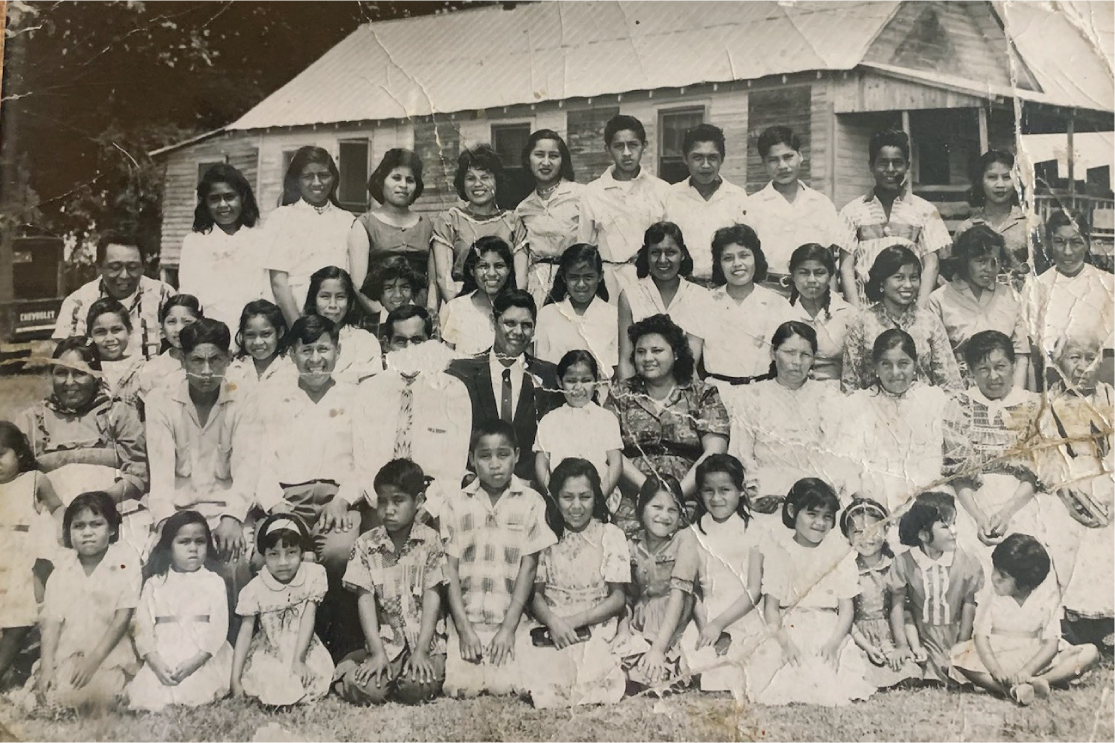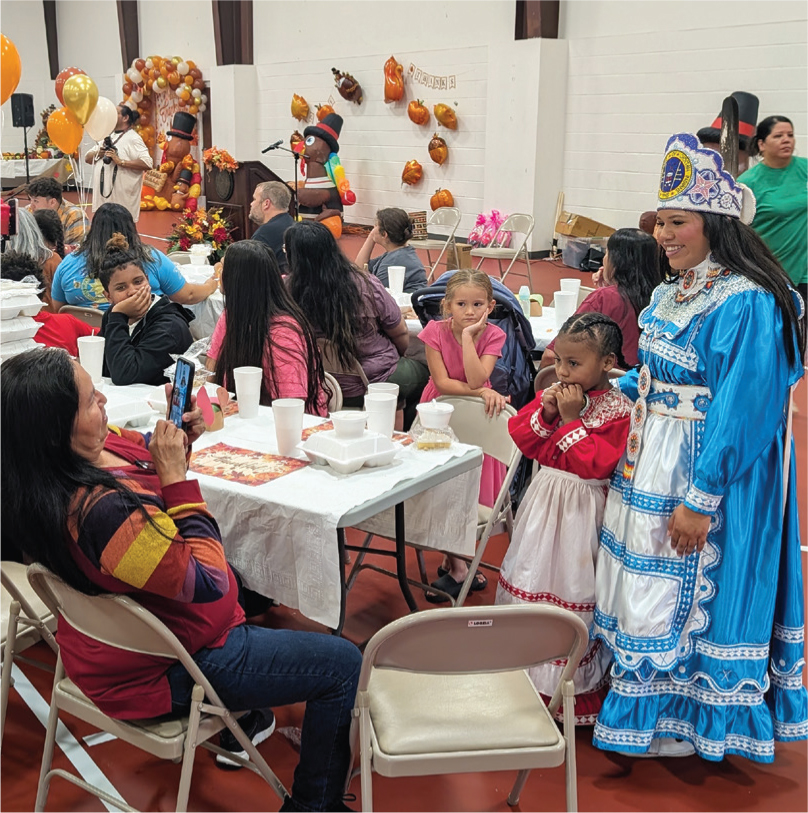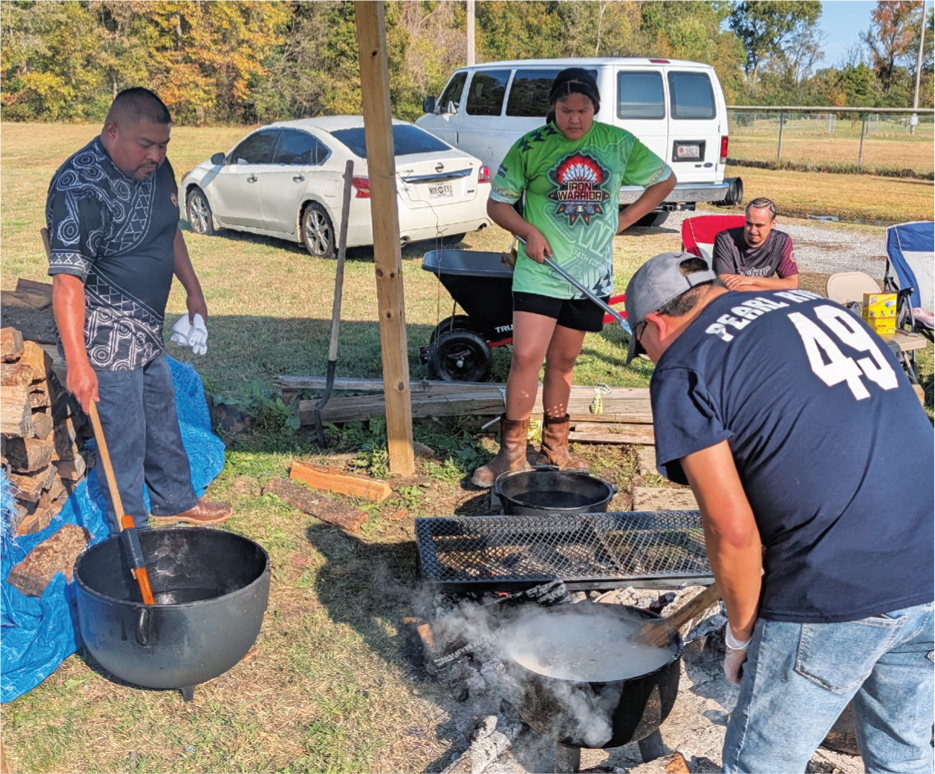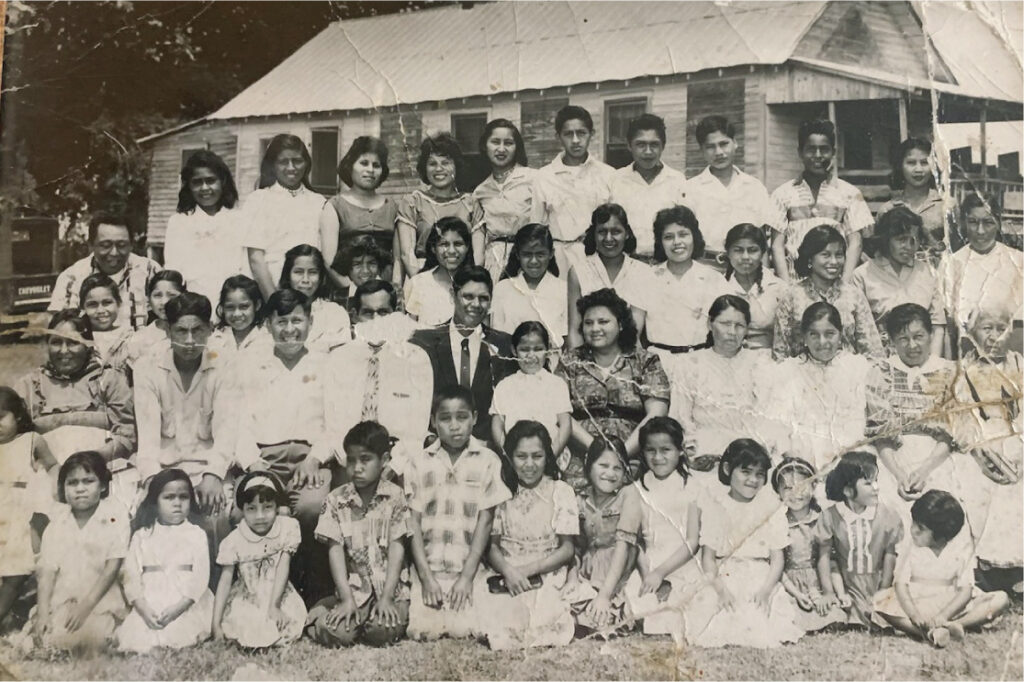by Bill Carey, the Tennessee History Guy
If you ask Google, it might tell you that there are no Native American reservations in Tennessee. But that’s misleading.
In West Tennessee, there’s a piece of land owned by the Mississippi Band of Choctaw Indians. It’s about 220 acres, and only about 100 people live there. There are no businesses — just homes, a community center, a storm shelter and some ball fields.
It may or may not be accurate to call this property in Lauderdale County a reservation because the Henning land is a subset of a much larger reservation in a neighboring state. But many people in Lauderdale County and in the West Tennessee Choctaw community refer to it by that name.
How it came about is one of Tennessee’s best-kept secrets.
Those who remained behind
When settlers first migrated across the Appalachian Mountains, the Choctaw were living in present-day central Mississippi — south of the Chickasaw Indians and west of the Creek.
In the vernacular of the 19th century, the Choctaw were one of the Southeast’s five “civilized” tribes — along with the Cherokee, Creek, Chickasaw and Seminole. These nations were referred to (in newspapers and textbooks) as “civilized” because they adopted many aspects of the culture of the United States such as a written constitution, centralized government, horticulture and religion.
When the U.S. government forced these tribes to migrate west in the 1830s, about 11,500 Choctaw Indians left Mississippi to head west. However, about 4,000 remained behind.

For many years, Mississippi’s Choctaw population ebbed away until only about 1,500 remained in about 1910. The numbers have since rebounded. Today, there are about 11,100 members of the Mississippi Band of Choctaws. The band owns about 35,000 acres in central Mississippi, scattered over nine counties.
Golddust
So when and why did a community of Choctaw Indians move to Lauderdale County?
It was hard to find work in Neshoba County, Mississippi. Meanwhile, there were farmers in the tiny Mississippi River town of Golddust, Tennessee, who needed sharecroppers to grow cotton. Around 1952, one of these farmers managed to recruit some Choctaw Indians living on tribal land in Mississippi to move to Golddust.

“We left the reservation because we thought that if we could get away from the low-income area and raise crops, we could make a better living,” a young man named Cubert Bell said in 1976. “But sharecropping never worked out.”
Bell, who now lives on the Henning Choctaw land with his wife, Lacy, grew up in Golddust. “The houses were remote, and it was primitive,” he recalled. “We had no running water. We did have electricity, but we didn’t have much that operated on electricity.”
The isolation of the Native Americans in Golddust was increased by the fact that they spoke the Choctaw language at a time when public schools in Tennessee weren’t equipped to deal with second languages.
Bell left Golddust as a freshman in high school to attend Harrison-Chilhowee Baptist Academy in East Tennessee (now known as The King’s Academy). After graduation, Bell enlisted in the Marines and was sent to the Vietnam War.
Most of Tennessee’s Mississippi River towns vanished over the years because of flooding and the decline of ferry travel. Golddust suffered the same fate. After about 1965, people in Golddust scattered to places such as Ripley, Henning, Dyersburg and Memphis.
“I was a small child in Golddust,” said Margaret Moore, a niece of Cubert Bell who is now president of the Tennessee Choctaw Development Club. “But my father became a welder and got a job at a factory, so we moved to Memphis.”
Chucalissa
Meanwhile, there was something occurring near Memphis that had a big impact on Tennessee’s Choctaw community.
In 1936, the government of Shelby County bought land south of Memphis for a park for African Americans (remember, this was during segregation). On the property was a prehistoric mound complex that Civilian Conservation Corps workers excavated and researched during the Great Depression.
Eventually, University of Memphis archaeologist Charles H. Nash and his students began digging around the mound complex. They discovered thousands of artifacts that proved that generations of Native American communities had lived in the area. Nash dubbed the place Chucalissa (a Chickasaw word meaning “Abandoned House”).
By the 1950s, there was no more need for segregated parks in Memphis. Nash wanted Chucalissa preserved, but he also wanted it turned into a living history area for Native American culture. “Nash dreams of a Chucalissa alive with activity,” Memphis Press-Scimitar columnist Eldon Roark wrote in 1958. “Indians making pottery, baskets, beadwork, arrowheads; chanting Indian songs and doing ceremonial dances; cooking over open fires and demonstrating the ways of life of their forefathers.”
Nash’s persistence paid off. It took years, but various local and state governmental agencies worked together to organize what is now called the Chucalissa Indian Mounds and the C.H. Nash Museum, now part of the University of Memphis.
Along the way, Nash recruited a Mississippi Choctaw Indian named L.D. John to move to the Chucalissa property with his wife, Alice, and two children. L.D. and his family lived there in one of several small houses. They served as caretakers and demonstrated to school groups and visitors how Native Americans made pottery and beadwork. The John family thus became the first of dozens of Choctaw Indians to live at Chucalissa.
The best remembered of these Choctaw Indians at Chucalissa was Wood Bell — a World War II veteran who became a guide in 1971 and died in 1999. “As a tour guide at Chucalissa for 28.5 years,” the Commercial Appeal said, “the respected Choctaw elder taught countless schoolchildren what had been passed down to him about the ancient ways.” Wood Bell and other members of Tennessee’s Choctaw community took part in annual powwows staged at Chucalissa that featured crafts, music, dancing demonstrations and stickball games.

“Those powwows were wonderful events that drew hundreds and hundreds of people,” said David Dye, an archaeology professor at the University of Memphis who spent a lot of his life at Chucalissa in the 1980s and 1990s.
The events continued until the turn of the century. Around 2005, the Choctaw Indians living at Chucalissa moved away. But for decades, Chucalissa gave impetus for the West Tennessee Choctaw community to remain an active group with appreciation of its traditions.
The purchase
In the late 1980s, some of the members of Tennessee’s Choctaw community — now scattered in several West Tennessee counties — began talking to federal officials and to the Mississippi Band of Choctaw Indians about long-term needs. (After all, Choctaw Indians living in Tennessee were still members of the Mississippi band.)
“We asked people at the Indian Health Service why we couldn’t get services for more than 200 Choctaws living in West Tennessee,” said Cubert Bell, a nephew of Wood Bell and now one of the prominent elders among the Tennessee Choctaw community. “They told me that if Chief Phillip Martin, who was the chief of the Mississippi Band of the Choctaw Indians at that time, wanted to do it, that they would look into it.

“Then we went to Chief Martin and asked him. At first, his reaction was to tell us that we had to move back to Mississippi. But we persisted. Finally, he agreed.”
In 1994, the Choctaw Housing Authority received a $1.37 million grant from the U.S. Department of Housing. That grant funded the purchase 88 acres near Henning and the construction of 20 single-family homes there.
As of today, the Choctaw parcel has been expanded to include about 220 acres. However, there are no businesses there and no signs on public property that indicate that there is a reservation there (two of the reasons so few Tennesseans know that it exists).
A few weeks ago, they held a Thanksgiving feast at the community center attended by about 200 people. Most were members of the Tennessee Choctaw community — such as Cubert and Lacy Bell and many members of their family, including niece Margaret Moore, son Cubert Jr. and several Bell grandkids.
Also present was Cyrus Ben, current chief of the Mississippi Band of the Choctaw Indians. “Days like today take me back to the powwows I used to attend at Chucalissa when I was a boy,” Ben said. “It’s wonderful for us to get out, see our neighbors, speak our language, eat some of our food and celebrate our culture.”




